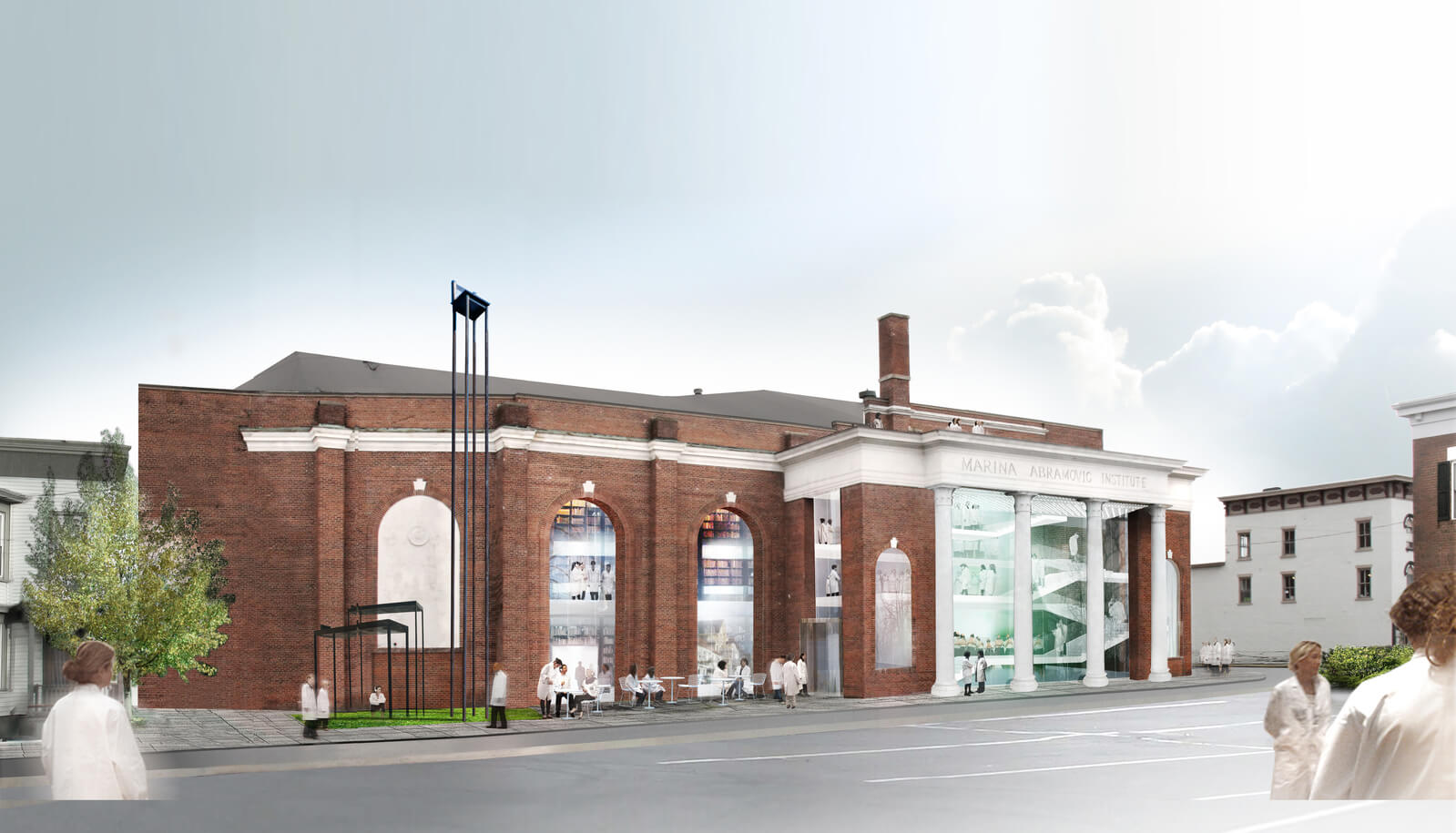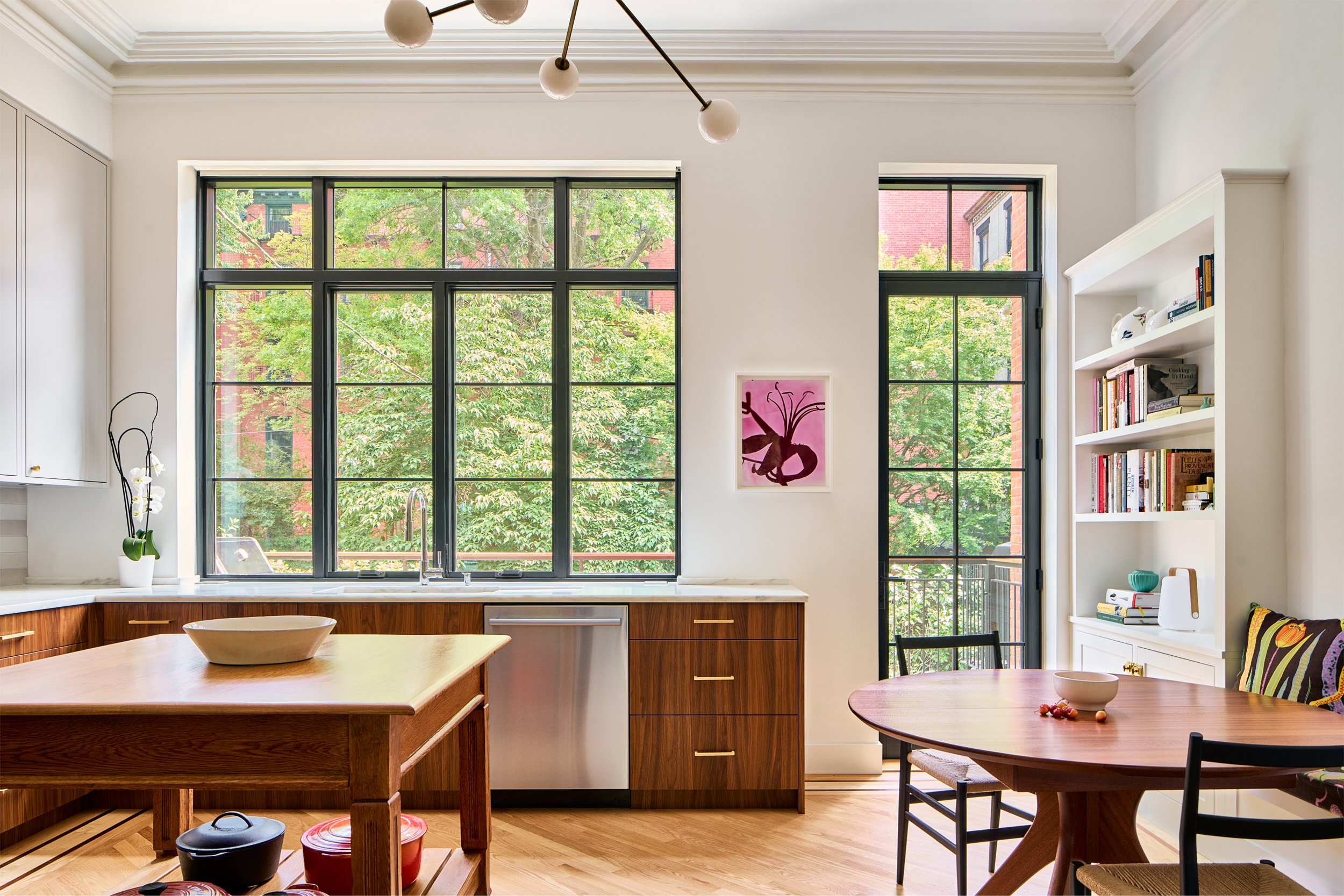1930s Hudson Movie Theater Once Set to Be Marina Abramović Performance Art Space Hits Market
It was set to be transformed into the splashy Marina Abramović Foundation for Preservation of Performance Art but the project was abandoned.

It was set to be transformed into the splashy Marina Abramović Foundation for Preservation of Performance Art. But with the project abandoned, this Colonial Revival movie house in Hudson is looking for a new owner ready for a renovation.
Located in the center of the artsy Hudson River town at 614 Columbia Street, the theater is back on the market more than a decade after the artist, known for her provocative performance pieces, purchased the property.

Originally opened as the Community Theatre in 1937, later years as a tennis center and antiques warehouse took a toll, leaving the once impressive auditorium in rough shape by the time Abramović purchased it in 2007. In an interview with the New York Times in the spring of 2008, Abramović spoke of converting the space into an arts center as her “life’s dream.” She paid for a new roof, hosted an open house for the community and brought on architects OMA with a project team led by Shohei Shigematsu and Rem Koolhaas to plan the transformation.
To raise the projected $21 million dollars a Kickstarter campaign was launched by the Marina Abramović Institute in the summer of 2013. While the effort raised over $600,000, projected costs rose and Abramović cited the new $31 million budget as the reason behind her cancellation of the project in the fall of 2017.

While listing photos show that the now available property is not a project for the faint of heart, there are still some hints of the original design behind what once was a thoroughly modern film house with a very traditional Colonial Revival finish.
The Hudson building — the brainchild of movie theater chain impresario Walter Reade — was one of four nearly identical theaters constructed on the east coast in 1937. Branded “something different for American towns,” the Motion Picture Herald dedicated several spreads to promoting Reade’s vision in 1938. Reade planned theaters that were intended to be part of the community, with the traditional design aimed to “fit the town” without sacrificing all the modern technology needed for a first-rate movie house. Locations were chosen in what were then small communities with some connection to early American history: Morristown and Toms River in New Jersey and Saratoga Springs and Hudson in New York.

While architect Thomas W. Lamb designed the three other buildings, architect William I. Hohauser was selected for the Hudson project. Based in Manhattan, Hohauser had a flourishing career designing apartment buildings and commercial properties.
Despite the change in architects, historic images show that all four of the theaters shared some common design elements. Each of the red brick buildings had a four-columned wood portico with “Community Theatre” emblazoned across the frieze, bulls-eye windows and keystoned arches. According to the Motion Picture Herald, the Hudson theater had the added touch of recessed rubber mats emblazoned with images of Henry Hudson’s ship the Halve Maen set into the floor of the portico.
Inside the space was a mix of modern and traditional, with tinted plaster walls and a Colonial-inspired box office combined with Formica doors, stainless steel moldings and cove lighting. Blue seems to have dominated the color scheme, including the lobby carpeting and the draperies on the massive Palladian windows. The blue continued into the auditorium with more carpeting and cement wainscoting contrasted with pale walls with white and silver pilasters. The 1,500 seats were upholstered with plum mohair.

Construction had kicked off in the late summer of 1937 and by winter of the same year, it was ready for the public. The theater opened on December 24, 1937, with a reception and luncheon for special guests before the doors were thrown open to the public to view the first film in the sparkling new auditorium. “Submarine D-1,” a melodrama starring Pat O’Brien that has not exactly become a familiar classic, was the Christmas Eve selection.
Ads for the new movie house promoted the “up to the minute air conditioning,” the ability to smoke indoors and the fireproof and panic proof construction. The theater operated until at least the late 1960s. A hunt for ads turned up a showing of “Doctor Zhivago” in 1967.

After the screens went quiet the massive space was used as the Community Tennis Center, the auditorium transformed into an indoor sports facility. In the late 1990s, it was sold again and used as an antiques warehouse before being sold to Abramović in 2007 for $950,000.
It has a prime Hudson location, just two blocks off the main drag of Warren Street and across the street from the summer location of the popular Hudson farmer’s market. The building is also located within the locally designated Warren Street Historic District, overseen by the Hudson Historic Preservation Commission.

A prospective owner will no doubt need vision and money to convert the structure to a new use. Perhaps the success stories of some of the other surviving Community Theatres can serve as inspiration.
After closing and sitting vacant for years, the Morristown theater was saved by volunteers in the 1990s and, after a major restoration effort, is operated as the Mayo Performing Arts Center. The Saratoga Springs theater is owned by a real estate company that converted the building to office space. Current views of the building seem to show the original facade largely intact, even including what looks like the original ticket booth. The Toms River theater appears to be the most altered of the four; its portico is gone or lost under facade alterations, but it is recognizable and still survives after being converted for retail and restaurant use.
Almost a decade after the Community Theatre opened in Hudson architect Hohauser designed another film house for Walter Reade. Opened in 1946 in Trenton, N.J., it shares many of the same design elements of its Hudson sibling. This building too survives, converted to use as a church.
The Hudson property is listed for $1.47 million by Nancy Felcetto and Robin Horowitz of Halstead.











Related Stories
- Be the Lord or Lady of Your Own Lavish Castle With This Tudor Revival Fixer-Upper in Tuxedo Park
- Live Out Your Lighthouse Keeper Dreams at the Braddock Point Lighthouse, Yours for $1.3 Million
- A Cozy Lock Tender’s Cottage Along the Delaware and Hudson Canal, Yours for Under $200K
Email tips@brownstoner.com with further comments, questions or tips. Follow Brownstoner on Twitter and Instagram, and like us on Facebook.





What's Your Take? Leave a Comment